General Sir John Monash, Personal Files Book 17, 11 February - 18 March 1918, Part 5

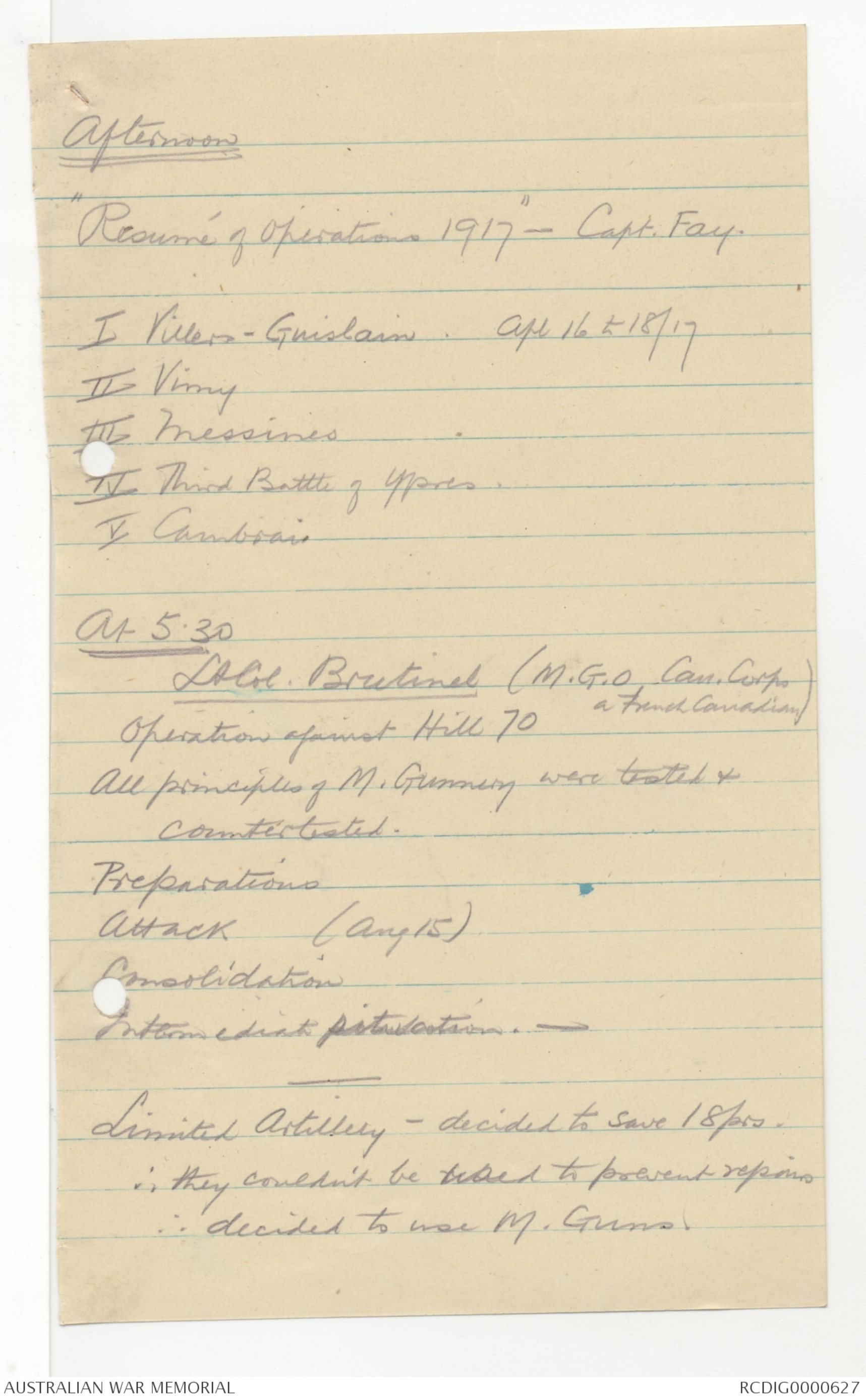
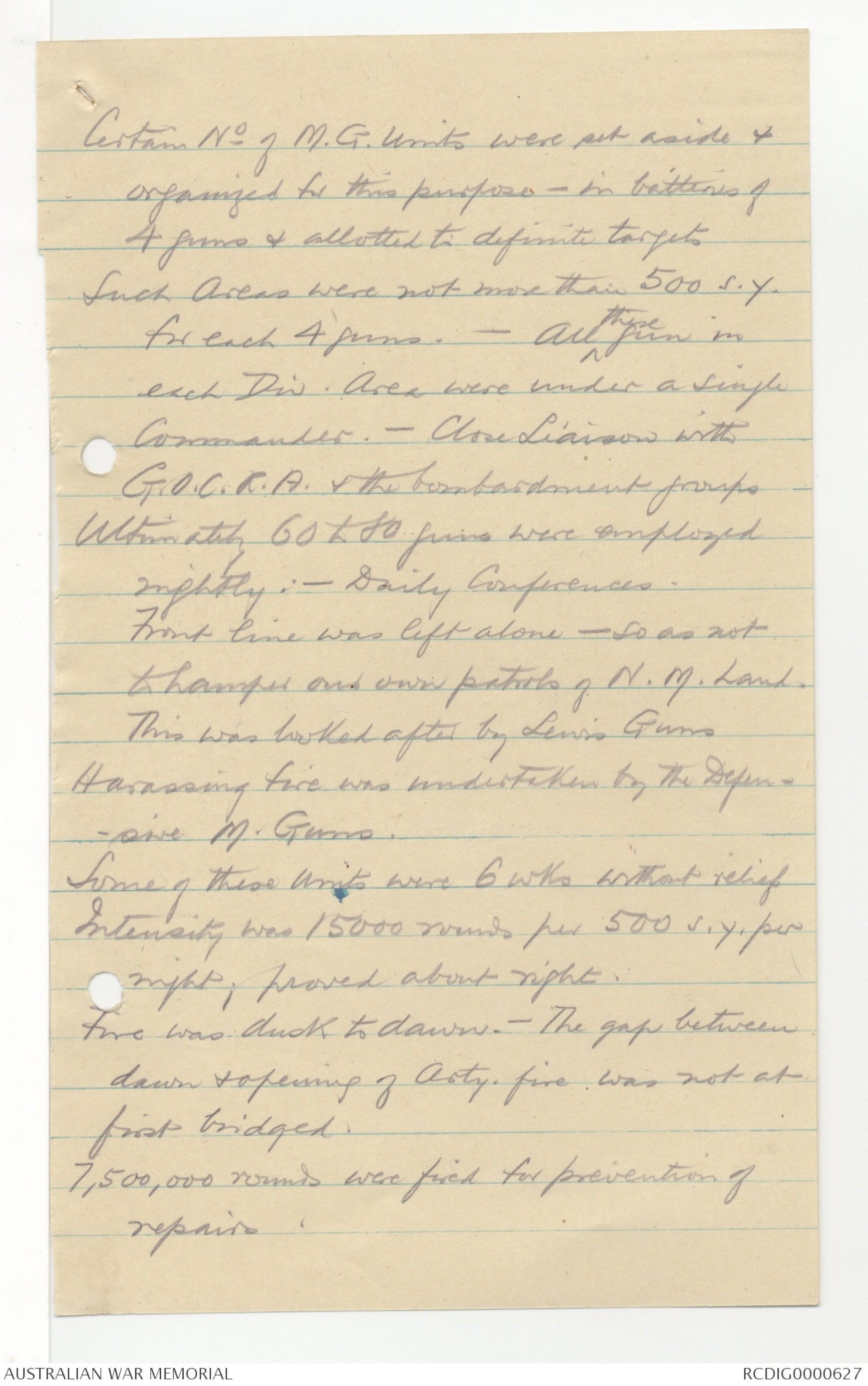
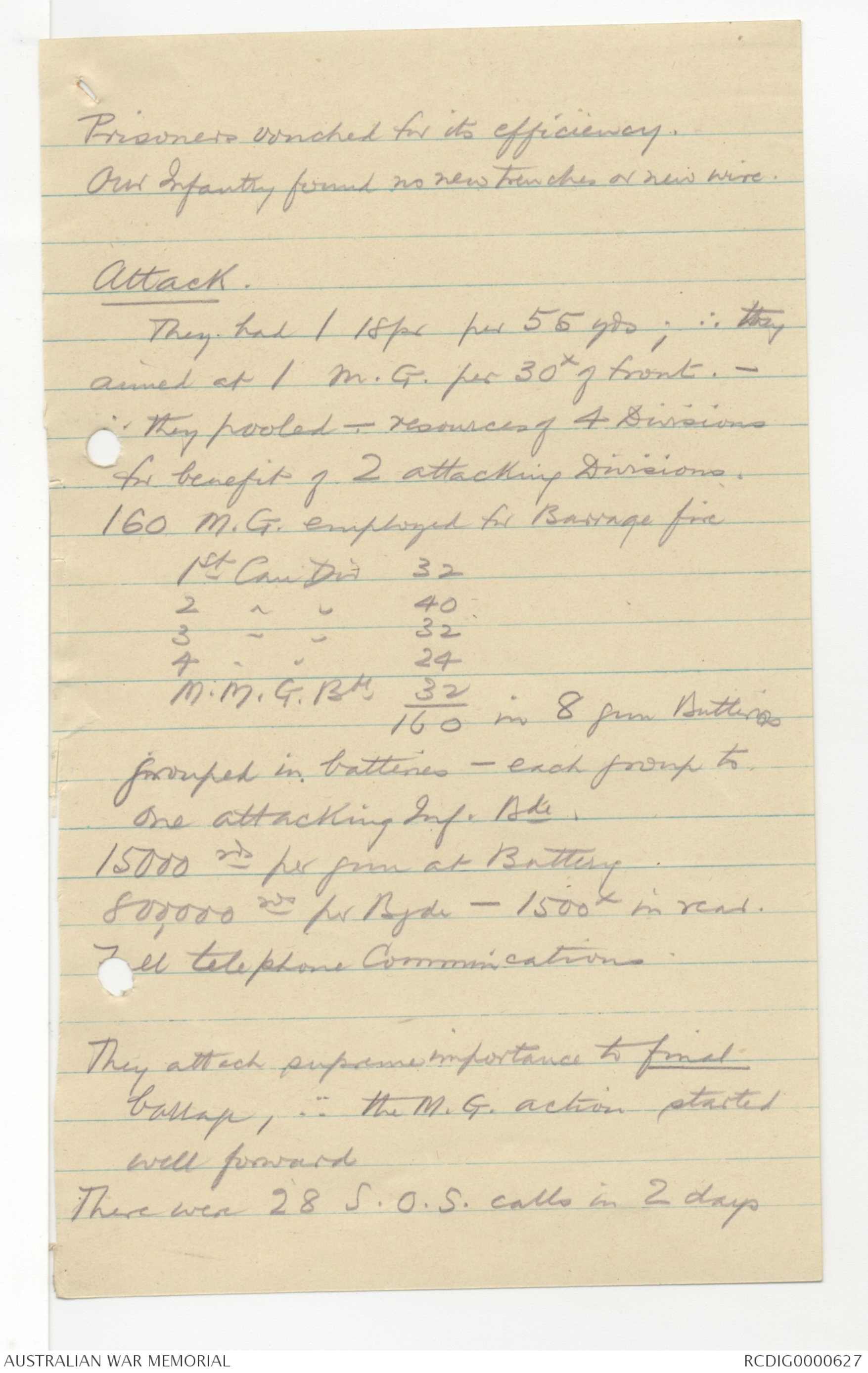
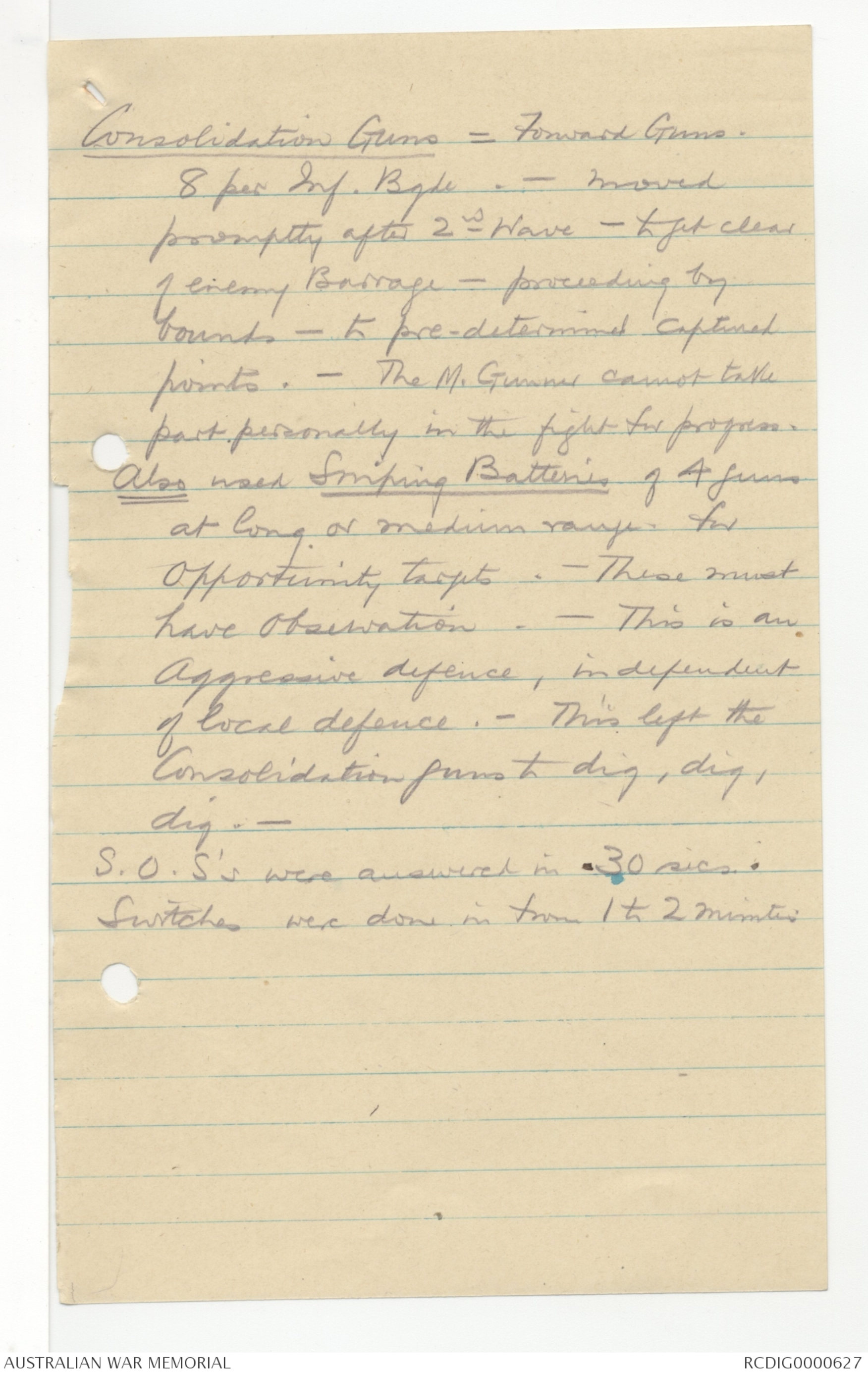
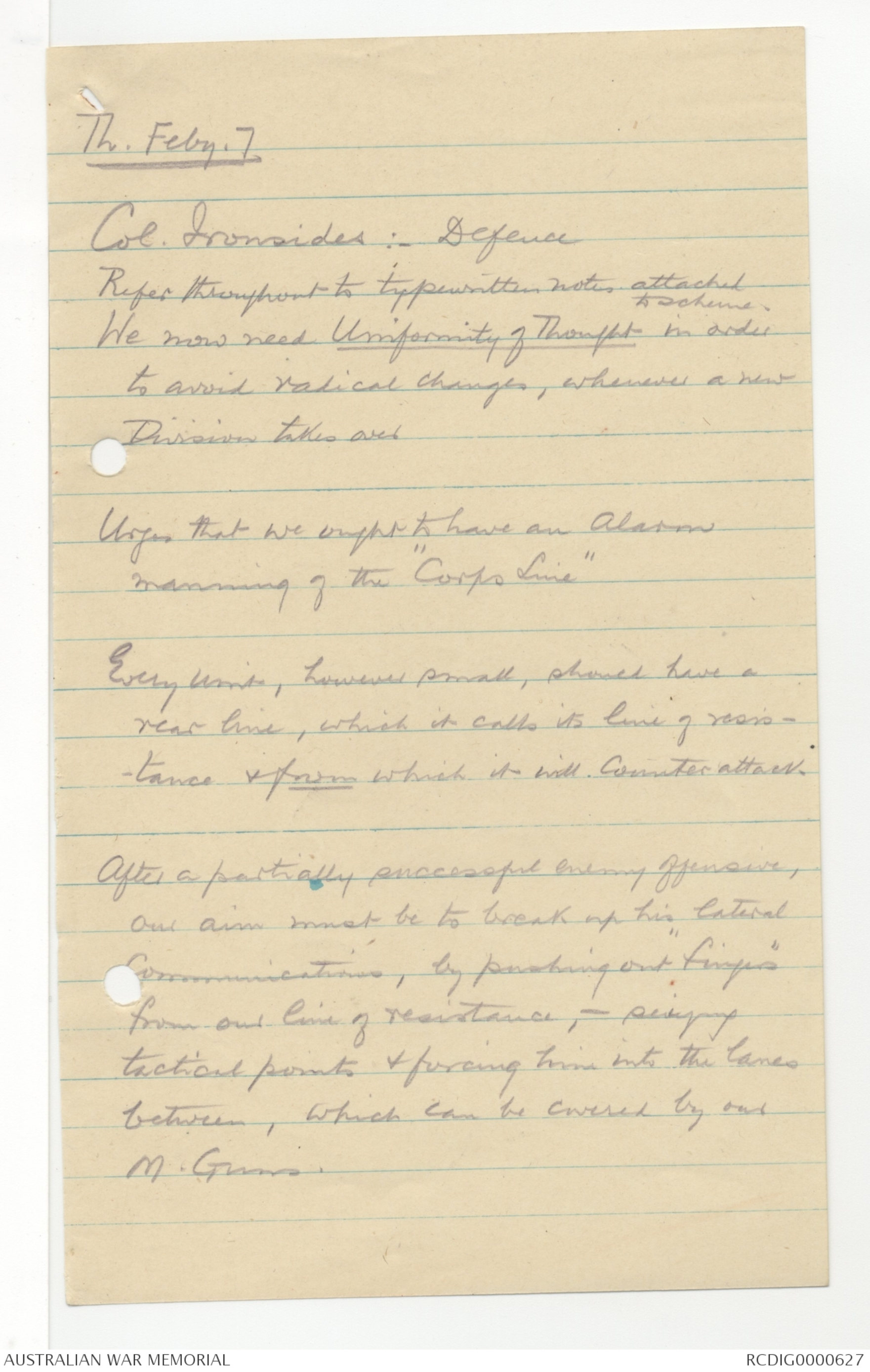
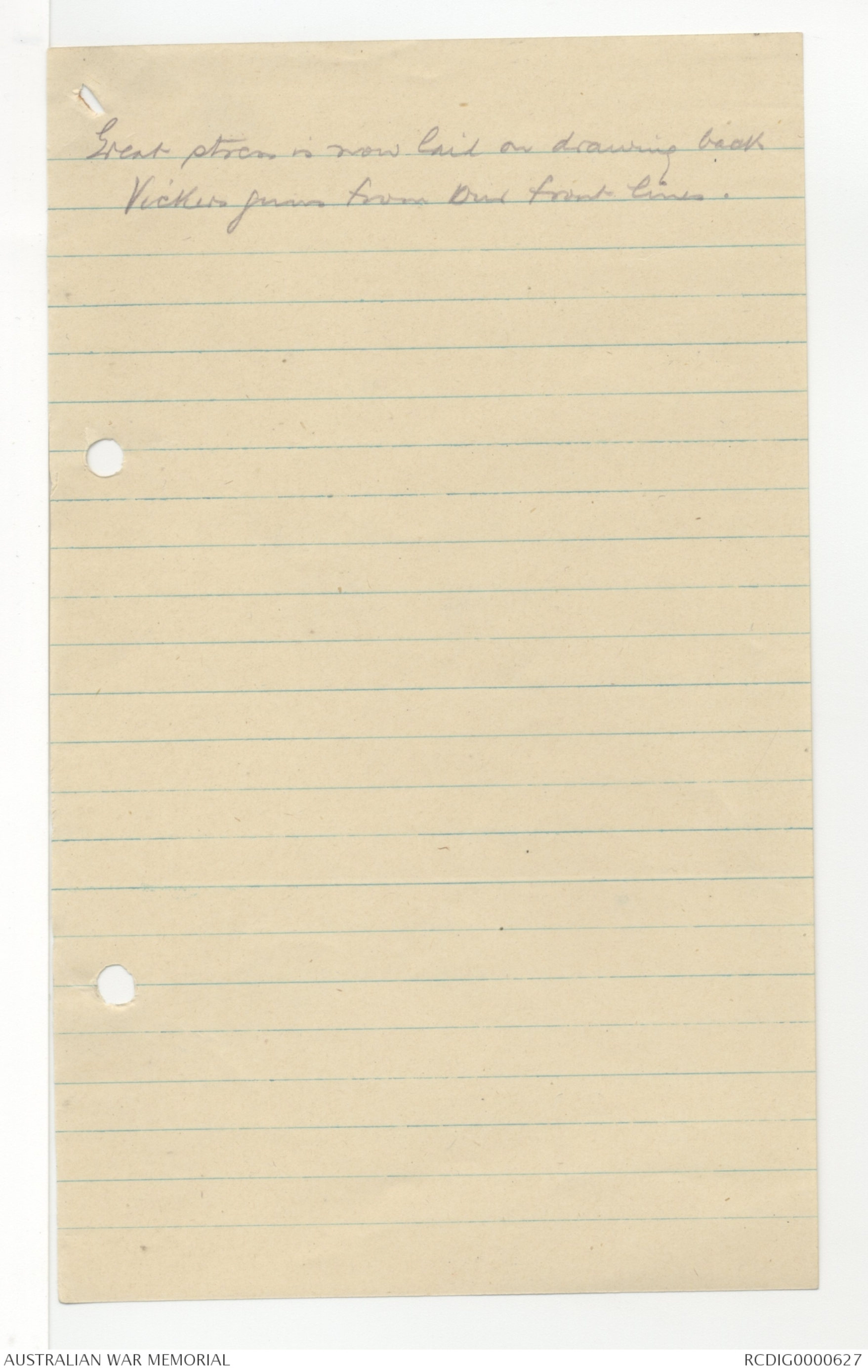
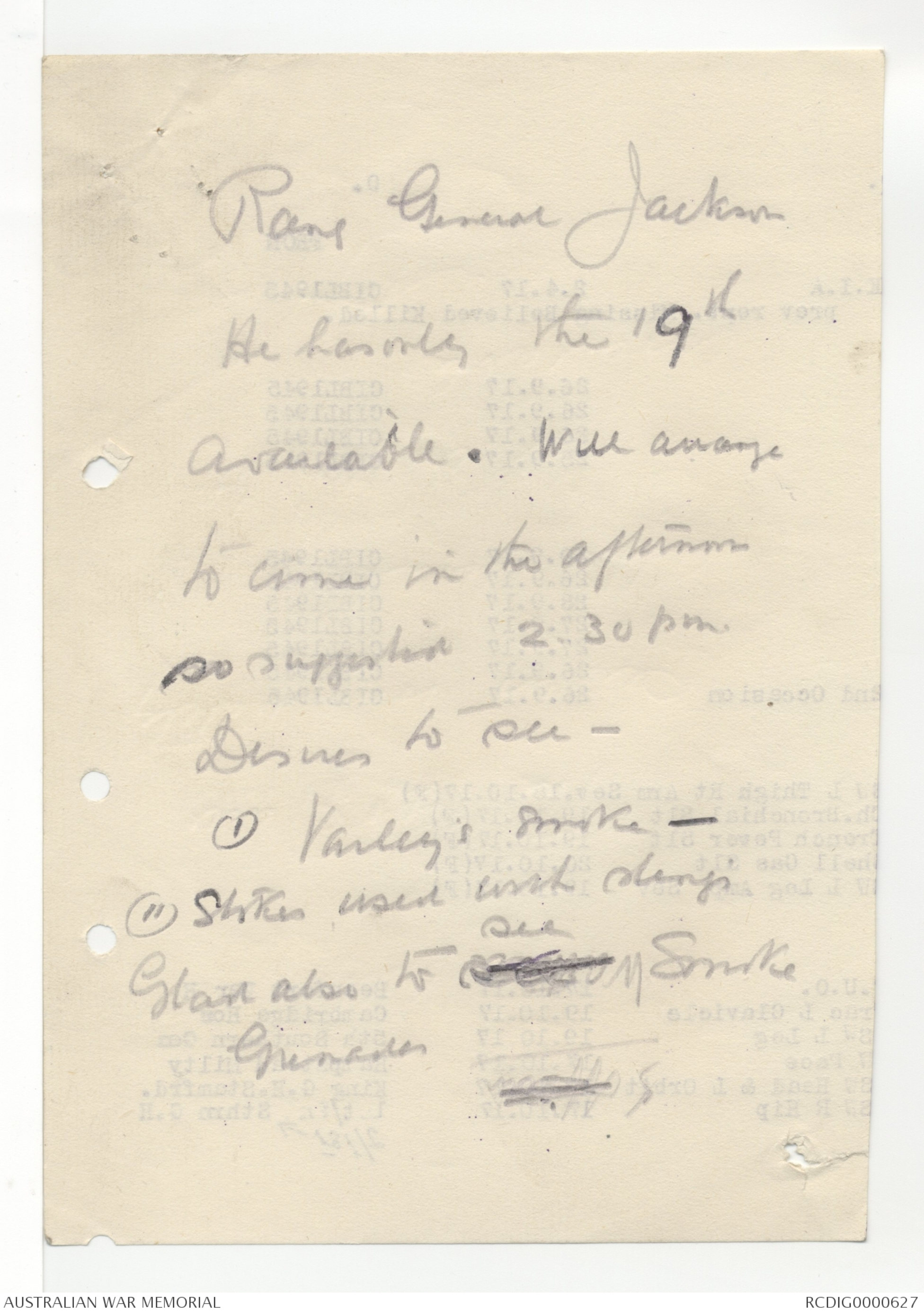
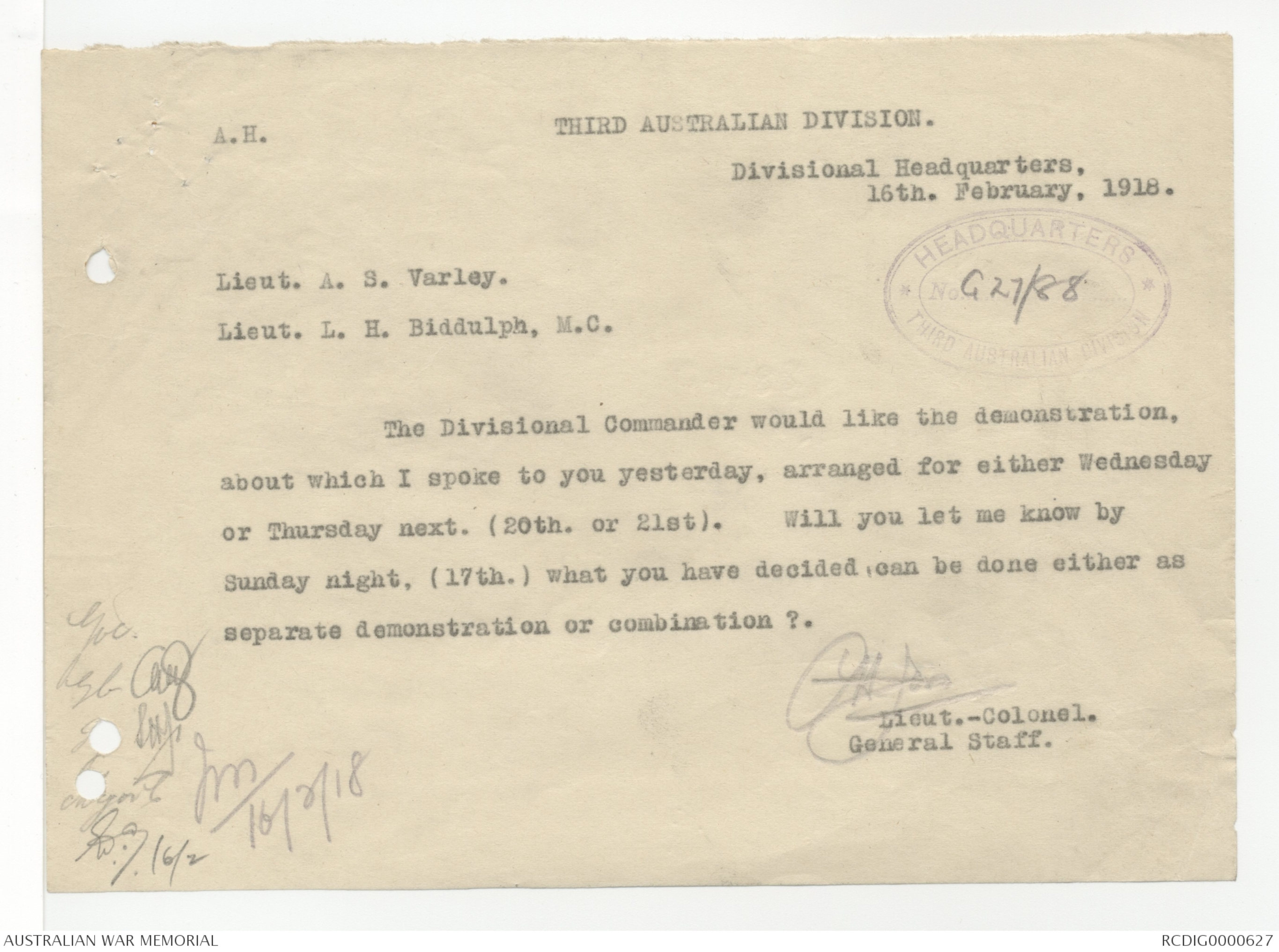
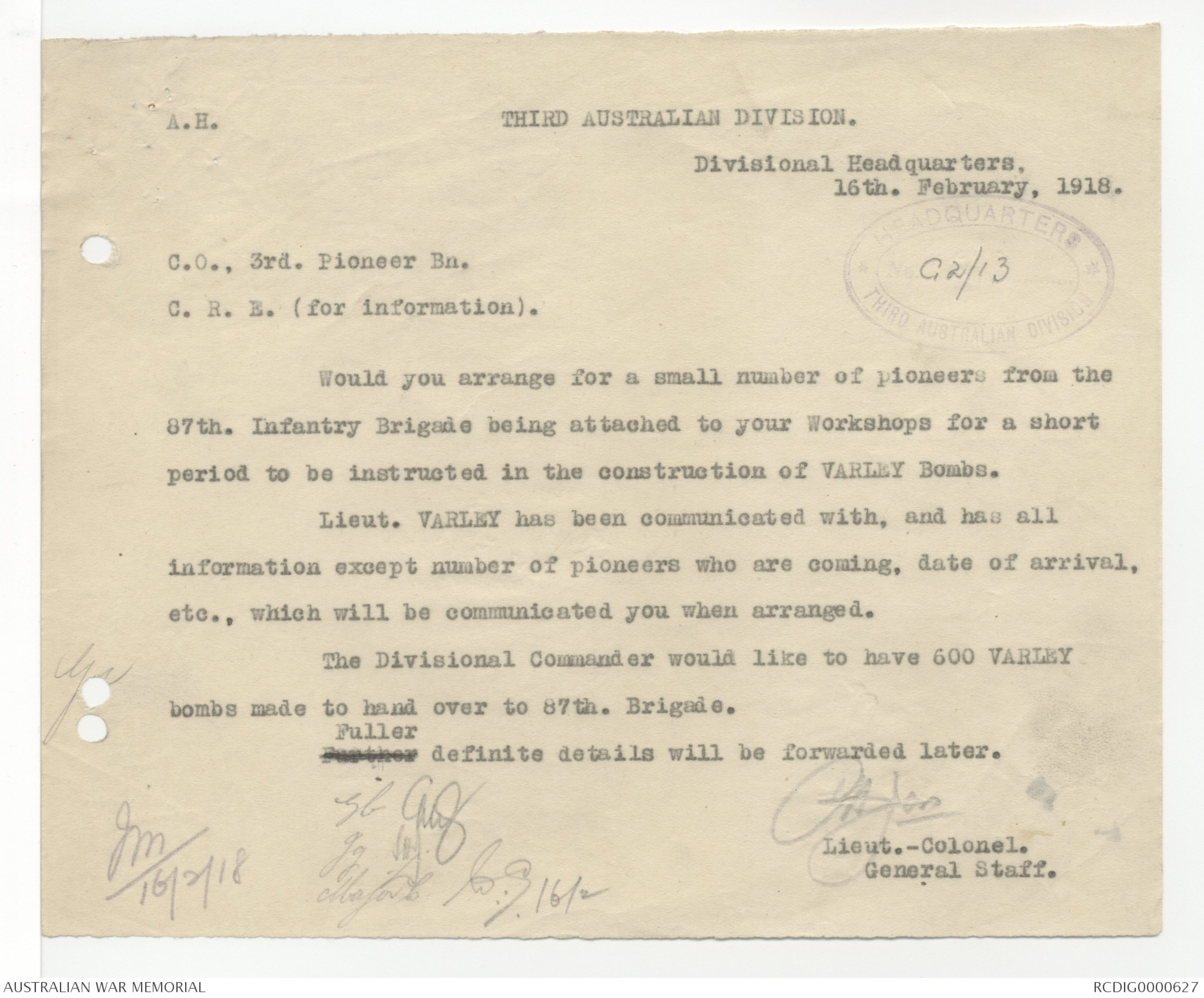
Do not fire over own infantry if they
are more than 2000x from the M. Gun.
Clearance for Range 1000x is 20x clearance
1500x is 40x clearance
2000x is 80x clearance
These will be reduced as M.G. get better trained.
Describes direct overhead fire - where
M.G. can see both the objective &
our own troops.
Indirect Fire - Allow the gunners sufficient
time to make their preparations. -
But when once in position &, the M.G.
can produce fire accurately & quickly
on any target.
Rate of Fire - problem is belt-fitting.
Platform - a wooden T base.
Afternoon
"Resumé of Operations 1917" - Capt. Fay.
I Villers-Guislain Apl 16 to 18/19
II (Vimy)
III Messines
IV Third Battle of Ypres
V Cambrais
At 5.30
Lt.Col. Brutinel (M.G.O Can. Corps
a French Canadian)
Operation against Hill 70
All principles of M. Gunnery were tested &
counter-tested.
Preparations
Attack (Aug 15)
Consolidation
Intermediate situation. -
Limited Artillery - decided to save 18 prs.
∴ they couldn't be tested to prevent repairs
∴ decided to use M. Guns.
Certain No. of M. G. Units were set aside &
organised for this purpose - in batteries of
4 guns & allotted to definite targets.
Such Areas were not more than 500 s.y.
for each 4 guns - All ^these gun in
each Div. Area were under a single
Commander. - Close Liaison with
G.O.C.R.A. & the bombardment groups
Ultimately 60 to 80 guns were employed
nightly :- Daily Conference
Front line was left alone - so as not
to hamper our own patrols of N. M. Land.
This was looked after by Lewis Guns
Harassing fire was undertaken by the Defensive
M. Guns.
Some of these units were 6 wks without relief
Intensity was 15000 rounds per 500 s.y. per
night, proved about right.
Fire was dusk to dawn. - The gap between
dawn & opening of Arty. fire was not at
first bridged.
7,500,000 rounds were fired for prevention of
repairs.
Prisoners vouched for its efficiency.
Our Infantry found no new trenches or new wire.
Attack.
They had 1 18 pr per 55 yds; ∴they
aimed at 1 M.G. for 30x of front. -
∴ they pooled - resources of 4 Divisions
for benefit of 2 attacking Divisions.
160 M.G. employed for Barrage fire
1st Can. Div 32
2 " " 40
3 " " 32
4 " " 24
M.M.G.Bn. 32
160 in 8 gun Batteries
grouped in batteries. - each group to
one attacking Inf. Bde.
15000 rds per gun at Battery
800,000 rds per Bgde - 1500x in rear.
Full telephone Communications.
They attach supreme importance to final
barrage, ∴ the M.G. action started
well forward.
There were 28 S.O.S. calls in 2 days.
Consolidation Guns =Forward Guns.
8 per Inf. Bgd. - moved
promptly after 2nd wave. - to get clear
of enemy Barrage - proceeding by
bounds - to pre-determined captured
points. - The M. Gunner cannot take
part personally in the fight for progress.
Also used Sniping Batteries of 4 guns
at long or medium range for
opportunity targets. - These must
have observation. - This is an
aggressive defence, independent
of local defence. - This left the
Consolidation guns to dig, dig,
dig. -
S.O.S.'s were answered in 30 secs.
Switches were done in from 1 to 2 minutes.
Th. Feby. 7
Col. Ironsides :- Defence
Refer throughout to typewritten notes attached
to scheme.
We now need Uniformity of Thought in order
to avoid radical changes, whenever a new
Division takes over.
Urges that we ought to have an alarm
manning of the "Corps Line"
Every unit, however small, should have a
rear line, which it calls its line of resistance
& from which it will Counter attack.
After a partially successful enemy offensive,
our aim must be to break up his lateral
communications, by pushing out "fingers"
from our line of resistance,- seizing
tactical points & forcing him into the lanes
between, which can be covered by our
M. Guns.
Great stress is now laid on drawing back
Vickers guns from our front lines.
Rang General Jackson
He has only the 19th
available. Will arrange
to come in the afternoon
so suggested 2.30 p.m.
Discuss to see -
I Varley's smoke
II Stokes used with slings
Start also to xxxx see Smoke
Grenades.xxxx
A.H. THIRD AUSTRALIAN DIVSION.
Divisional Headquarters,
16th. February. 1918.
Lieut. A. S. Varley.
Lieut. L. H. Biddulph M.C.
G27/28
The Divisional Commander would like the demonstration,
about which I spoke to you yesterday, arranged for either Wednesday
or Thursday next. (20th or 21st). Will you let me know by
Sunday night. (17th.) what you have decided can be done either as
separate demonstration
or combination ?.
(?Signature illegible)
Lieut.-Colonel.
General Staff.
multiple initials and dated
16/12
JM 16/2/18
GOC.
Major
Signed16/2/18
16/2/18
A.H. THIRD AUSTRALIAN DIVISION.
Divisional Headquarters.
16th. February. 1918.
C.O. 3rd. Pioneer Bn.
C. R. E. (for information).
G2/13
Would you arrange for a small number of pioneers from the
87th. Infantry Brigade being attached to your Workshops for a short
period to be instructed in the construction of VARLEY Bombs.
Lieut. VARLEY has been communicated with, and has all
information except number of pioneers who are coming, date of arrival,
etc., which will be communicated you when arranged.
The Divisional Commander would like to have 600 VARLEY
bombs made to hand over to 87th. Brigade.Further Fuller definite details will be forwarded later.
(?Signature illegible)
Lieut.-Colonel.
General Staff.
(various initials and dates?)
GOC.
JM
16/2/18
Major G. Signature
16/2/18
 Sam scott
Sam scottThis transcription item is now locked to you for editing. To release the lock either Save your changes or Cancel.
This lock will be automatically released after 60 minutes of inactivity.